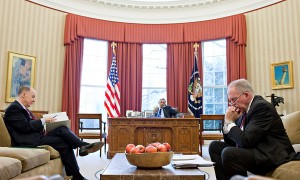Some Data Points on Minh Qhang Pham, AQAP’s Graphic Artist of Mass Destruction
On Friday, the government indicted Minh Quang Pham for material support of al Qaeda in the Arabian Peninsula. The indictment and the press release make it clear (though don’t say explicitly–though this report confirms it) that Pham’s primary alleged crime was helping Samir Khan produce Inspire magazine.
In or about April 2011, PHAM worked with a United States citizen (“American CC-1”) to create online propaganda for Al Qaeda in the Arabian Peninsula.
[snip]
[Pham] facilitated communications between al Qa’ida in the Arabian Peninsula and supporters; and provided expert advice and assistance in photography and graphic design of media for al Qa’ida in the Arabian Peninsula.
Meaning CC-2 is Anwar al-Awlaki.
In or about April 2011, PHAM met with a United States citizen (“American CC-2”) in Yemen.
Given the centrality of Pham’s alleged association with Khan and Awlaki, consider the following chronology and the additional details below.
December 2010: Pham travels from the UK to Yemen.
March and April 2011: Pham carries a Kalashnikov.
April 2011: Pham works with Samir Khan and meets Anwar al-Awlaki.
“About” May 2011: UndieBomb infiltrator travels from UK to Yemen.
September 27, 2011: AQAP releases Inspire, Issue 7.
September 30, 2011: Khan and Awlaki killed in drone strike
December 2011: Pham returns to the UK; “Prior to his arrest [June 29, 2012], PHAM was held by British authorities in immigration custody.”
Around April 20, 2012: UndieBomb 2.0 and his handler removed from Yemen.
May 3, 2012: AQAP releases Inspire Issues 8 and 9.
May 7, 2012: UndieBomb 2.0 revealed.
May 11, 2012: British role in recruiting UndieBomb 2.0 revealed.
May 26, 2012: False AQAP statement released.
June 29, 2012: Pham arrested (presumably in Britain); indicted in US.
First, note that some of alleged acts–notably carrying a Kalashnikov–might require an inside source to learn.
Then consider you had someone coming from the UK to Yemen not long before the UndieBomb 2.0 infiltrator. Unlike UndieBomb 2.0, Pham appears to have decided to leave after his partner in propaganda, Khan, got killed. But then he appears to have been held in immigration custody for 6 months–which happens to cover the time UndieBomb 2.0 infiltrator and his handler were still in Yemen.
How interesting, too, that Pham is being tried here in the US, not in the UK (where the crimes are slightly different but where terrorist propaganda is even more criminalized than here, if I understand the law correctly). Why do you suppose they’re trying him here and not in the UK, where he has just been held for 6 months?
Meanwhile, I’ve always been intrigued that the latest versions of Inspire were released between the time when UndieBomb 2.0 was whisked out of Yemen and the time first the purported plot, then UndieBomb 2.0’s role it, was revealed. Then, several weeks later, someone released a false AQAP announcement claiming AQAP had been infiltrated. Pham would have been in British custody during this period.
Finally, there’s this rather interesting language. As a lot of indictments that fall under the federal terrorism statute do, this one has language on forfeiture under 18 USC 981. But note the way it phases this language on forfeiture.
As a result of planning and perpetuating Federal crimes of terrorism against the United States … defendant [] shall forfeit … all right, title, and interest in all assets, foreign and domestic, affording a source of influence over al Shabaab and AQAP.
This guy, presumably, doesn’t have a whole lot of financial goods to forfeit. Nevertheless, the government is going to the trouble of seizing all his interest in assets affording Pham influence over al Shabaab and AQAP.
Those are, mind you, just data points. But some fairly intriguing ones.

